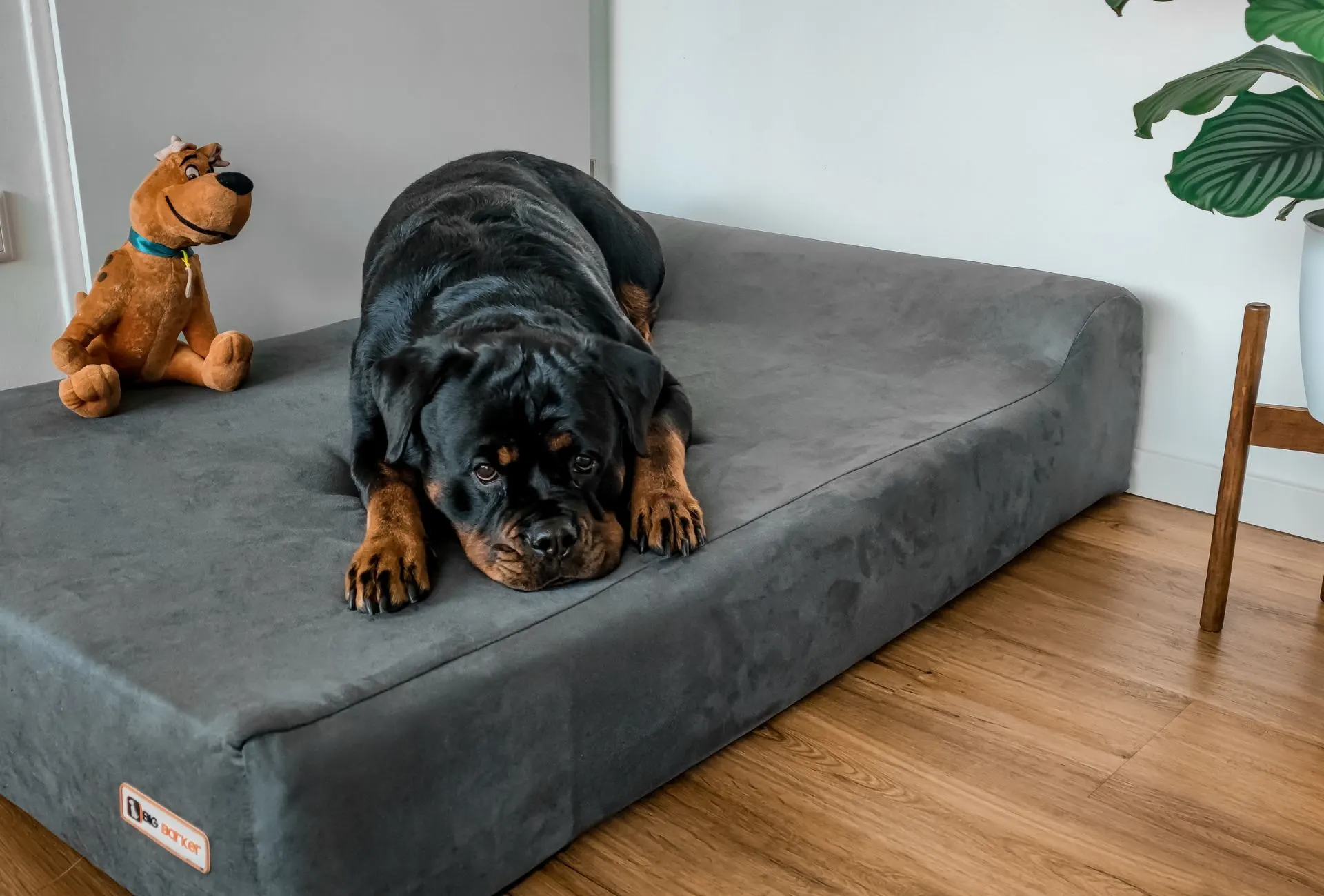The effects of a collapsed trachea can range wildly and may cause extreme discomfort, not only when sleeping but every time your dog gasps for air.
First and foremost, it’s essential to get your pup checked out by a licensed veterinarian to determine what course of action is best.
Once your vet has run the diagnostics and determined the cause, medication is often required.
Severe cases might benefit from surgical correction although these are particularly complex and risky, the prognosis varies.
But if your vet has already prescribed antibiotics, anti-inflammatory meds, or cough suppressants, you may wonder what else you can do for your four-legged friend at home.
It’s essential to pin down the underlying cause.
Even if the primary factor is rooted in your dog’s genetics, for example, secondary factors can still aggravate the issue.
Secondary factors include obesity, environmental allergens, and collars.
It’s always wise to get rid of irritants in the air such as dust, household chemicals, smoke, or other allergens.
But in some specific cases, simple habits such as the sleeping position or the way you pick up your dog can worsen your pup’s medical condition.
Here’s my personal pick for a proper orthopedic dog bed.

Best Sleeping Position For Dogs With a Collapsed Trachea
Dogs whose trachea is collapsed may find it more comfortable to sleep on a softer bed with their head in a slightly elevated position or lie sideways.
Sleeping on the back with the belly and legs up or lying flat on the floor with their throats making contact with the floor may put unnecessary strain on the windpipe and trachea.
Keep in mind that there’s no scientific proof that any snooze option is indeed far superior to any other.
But in my opinion, it’s natural that sleeping positions putting pressure on the neck or throat might not be beneficial for dogs suffering from breathing issues.
The general consensus is that a soft place with the head elevated and sideways are a suitable sleeping position.
You can achieve that by getting an orthopedic dog bed with a bolstered headrest or just create one by rolling up a soft cotton blanket.

Don’t force your dog into a specific position though.
You’d assume your dog probably won’t opt for a sleeping position that’s bad for him.
Sadly, some dogs don’t have a good sense of self-preservation but regardless of that, it’s not wise to force a specific position.
You may try to encourage a certain position where you feel like your dog has the best rest in accordance with your vet.
If your dog plops down into a less-than-ideal sleeping position, just use a healthy treat to lure them into the desired position.
Since breathing and swallowing might be uncomfortable for your dog, you can also opt for other treats that don’t require chewing.
Peanut butter is a great option. Just make sure it’s natural and preferably single-ingredient, no added sugar or whatnot.
Occasionally, it may feel like we worry too much about how they sit or how they sleep but I’d say it’s better to check in with your vet once too often.
Does Collapsed Trachea Get Worse At Night?
Tracheal collapse may worsen at night, but there are no current studies to explore the correlation between the trachea and how much or why exactly it gets worse at night.
Some vets note that their clients report that their dog’s cough is aggravated at night.
This may be partly explained because struggling to breathe or goose-coughing may be more noticeable once settled down.
A suboptimal sleeping position or a spot with particularly many allergens may also worsen the condition.
How To Carry a Dog With a Collapsed Trachea
Small breeds are most at risk for a collapsing trachea. Naturally, many owners of smaller pups are inclined to pick them up more often.
Big dog comes? Pick the smaller dog up.
Undesirable behavior? Pick the small dog up.
Dog refuses to walk? Pick-up time!
I’ve talked about this in my article on how to pick dogs up in general (also, an article on how to pick up a spayed dog if you’re interested).
It’s generally not advised to always pick a smaller dog up anyway.
But you should be even more aware of bad habits when your dog suffers from a medical issue.
Not only could it worsen the trachea issue, but it could also lead to a snap or bite if your dog is triggered by pain.
Picking the dog up is usually just a habit owners pick up to avoid behavioral issues or get out of the way of larger canines, but what if it’s necessary?
If you do have to pick your dog up, avoid putting pressure on the neck or throat area.
Unless your vet greenlights it, try to avoid carrying your dog around.
Can You Walk a Dog With a Collapsed Trachea?
While veterinary guidance and treatment are essential, the daily life of many dogs suffering from mild cases may not be affected drastically and so they still need to be walked and exercised daily.
However, overexcitement and demanding exercise can worsen tracheal collapse.
High-impact activities, running, fetch – these should all be limited if your vet advises you to do so.
Dogs experiencing tracheal collapse should only wear harnesses on walks.
Putting any pressure on the neck is a no-go and a harness is superior to a collar in that regard.
Not all dogs love switching gear so make sure you introduce a well-fitting and comfortable harness in a calm environment with positive reinforcement.
Here are the key points summarized:
- Find a comfortable sleeping position for your dog
- Most dogs with tracheal collapse prefer sleeping with their head elevated or sideways
- Orthopedic dog beds with a headrest may be preferable
- Do not carry your pup around
- If you have to pick them up, don’t strain the neck
- Dogs with milder cases need exercise, but nothing high-impact
- Harness instead of collar
As always, if you suspect any kind of breathing issue, coughing, or whatnot – consult your veterinarian.
Adjustments in daily life like switching the harness or bed are only suitable as supportive measures, but your vet needs to treat the underlying cause.
Disclaimer: This blog post does not substitute veterinary attention and does not intend to do so. I am not a veterinarian or pet nutritionist. If your dog shows any sign of illness, call your vet.
Kathryn & Sparkle ✨💖✨ Finnegan
Sunday 11th of February 2024
That was such a helpful thorough article thank you I'm sitting with my dog Sparkle whose hand symptoms of this for a few months & maybe once a day but tonight it's not stopping & the soothing honey isn't helping. she's about to turn 17 & she hates nothing more than going in the car anywhere then she hates going to the vet & groomer next so I'm not going to do that. She'd rather be at home with me and I'm here to make sure she's comfortable and calm & safe already have a plan since obviously it's fairly present & realistic. Home Care vet & there she goes again so you can imagine how helpful your article was and I really appreciate that you could just like you trusted us to do the right thing and didn't speak to me like I was not capable of doing the things you were just very direct calm just what I needed thank you